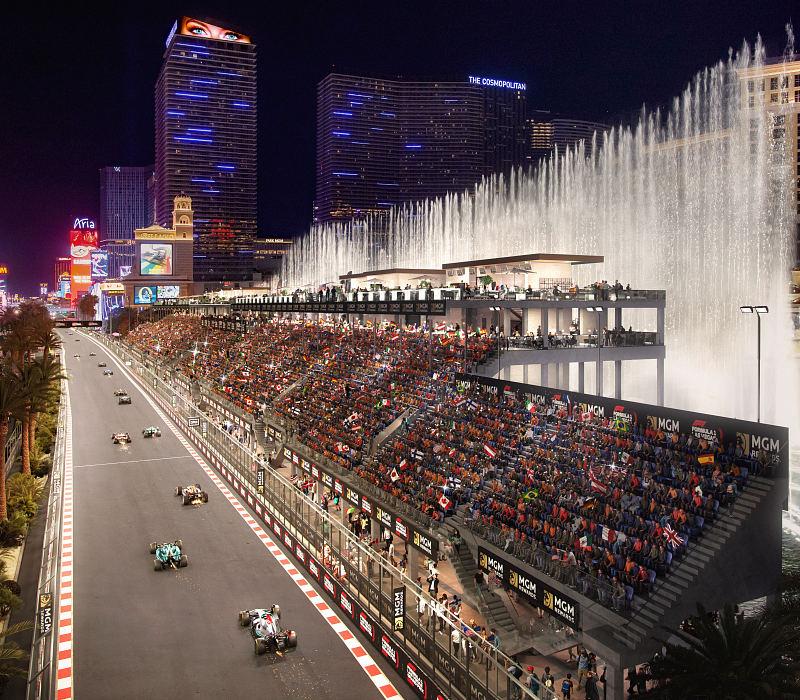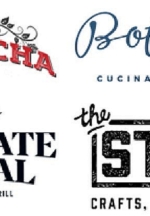
When Formula One’s governing body, the FIA, announced in 2022 that the sport would return to Las Vegas in November 2023, there was genuine excitement among the drivers.
There are, of course, better places than others to race in the world, and when you consider that the F1 calendar now has 23 unique destinations penciled in for this season, it will come as no surprise to learn that never-ending news of additional travel is not always enthusiastically received.
In short, the extended schedule has made traveling more of a chore for the drivers but news of a timely return to Vegas has given the whole of F1 a genuine spring in its step.
It has, after all, been over three decades since Sin City hosted the world’s fastest drivers.
Caesars Palace Grand Prix
F1’s only other previous stop in Vegas was a fleeting one with just two Grand Prix taking place in 1981 and 1982. Dubbed “Caesars Palace Grand Prix”, the inaugural winner was Alan Jones who, in his reliable Williams-Ford, managed to get to the finish line first after an eye-watering 75 laps of racing.
The following year it was Michele Alboreto driving a sporty Tyrrell-Ford who managed to get to the chequered flag before anyone else.
This specific idea of hosting a race in Vegas would carry on for another two years but by the end of 1982, the FIA had seen enough and decided that racing in the city wasn’t a concept that could generate the revenue needed to make it worthwhile.
Tellingly, Caesars ditched the idea of hosting any type of race completely in 1984 after concluding that it wasn’t a profitable venture owing to the small crowds and the enormous overheads. In effect, that was the end of the conversation around F1’s involvement in Sin City; it was a colossal failure.
Above all, this was down to the fact that the race itself was so uninspiring given that it took place in the parking lot of the casino. In essence, it could have been anywhere in the world which is why it failed to grab the public’s imagination.
To change that, the FIA and Vegas had to reach an agreement where the race itself took place on the fabled Strip; a stretch of road that the world could immediately identify, this was the unique selling point that Vegas had up its sleeve if it ever wanted to renegotiate a deal.
Three decades would pass before that was something that the Clark County Commission would be willing to consider but consider they eventually did. Ultimately, a change of heart came down to the unprecedented interest in the sport sweeping the United States which has been built on the success of Netflix’s hit series Drive to Survive.
Undoubtedly, this series, which gives viewers unrivaled insight into the lives of the drivers as well as a look into the jaw-dropping dynamics that develop in the pitlane, ended up convincing the US that F1 is a sport worth watching. Cue Vegas coming back to the table and offering up its service for a race, only this time, the powers that be of the city told F1 that they could go racing on the Strip.
The extension
Initially, the plan was in place for Vegas to host three races in a deal that would expire in 2025 but in early February 2023, the Clark County Commission agreed to shut the Strip until 2032 whenever F1 came to town in a bid to ensure that a lifetime partnership could be put in place with motor racing’s most prestigious code.
Being aligned with a sport that is currently going through a spectacular revival is, naturally, one reason why Vegas has yielded so much ground during negotiations but predominantly, it comes down to how much the region will make.
How much money will Las Vegas make from hosting?
The Clark County Commission was swayed by the revenue that ten Grand Prix races would generate. The committee pitching to them indicated that a long-term deal with F1 would make Vegas in excess of $1 billion. After decades of indifference, the time to act for both parties was evidently now and this is also why the city’s management has been quick to shake on an extended collaboration – the projected rewards are too good to turn down.
Which sectors will benefit the most?
To get a better idea of the sectors most likely to benefit from the arrival of F1 in the city, you first have to look back on the history of Vegas and what it does best. There isn’t a place in the world that is more synonymous with gambling than Vegas. After all, sports betting is legal in the state of Nevada and has been for some time with the legal framework initially put in place as far back as 1949. Astonishingly, even a Supreme Court ruling in 2018 that saw the State lose its monopoly on US sports betting hasn’t stopped the region’s gambling success from growing exponentially. In fact, the online sports betting industry continues to be one of the most competitive markets in the region – as can be seen with Nevada bookmakers like BetMGM offering a $1000 risk-free bet to clients while William Hill gives their customers a welcome bonus in the form of a $50 matched bet. Put another way, the options are endless and Nevada is thriving like never before.
You might ask why nothing can seemingly break the unique connection that Vegas has with gambling and the reason is simple: the city is built for it. So it stands to reason that the famous hospitality sector around the city’s biggest casinos should register record levels of turnover when the world of F1 descends on Vegas for a week in November every year.
Essentially, occupancy of every type of accommodation will be at its peak while players on the casino floors of the Strip will skyrocket. This will be a takeover that the city has never witnessed before and will provide good practice on how to deal with the masses that will arrive when Super Bowl LVIII is played in 2024 at the Allegiant Stadium.
Is a long-term deal with F1 sustainable in Las Vegas?
For the first few years at least, Vegas will ride the tidal wave of interest that F1 currently commands but it’s still worthwhile asking if there can be longevity in the sport in the US? Put differently, is this a fad and could the city end up losing money after agreeing to such a long deal?
It doesn’t have to be a passing trend so long as the sport’s think tank makes the most of finally capturing the public’s undivided attention. The objective will be to market the sport effectively and build on the subplots that the show Drive to Survive has been so successful at unearthing. Perhaps most importantly of all in the battle to keep a nation interested revolves around American representation on the grid which would do more than anything else to create a sense of loyalty to the sport.
Yes, there have been 57 US drivers to compete in the sport over its history and even two world champions but in modern times, there has been an unexplained absence of local F1 drivers. Needless to say, this is why 22-year-old Logan Sargeant’s recent introduction to F1 has been met with so much excitement after he signed with Williams.
There will be a significant amount of pressure on his shoulders but expectations should be tempered on account of Williams’ performance issues that have plagued the team. However, just having a fellow countryman to cheer at this stage will be a step in the right direction and should help the promoters sell a compelling narrative to American fans.
The verdict
The city of Las Vegas and F1 are, without doubt, entering unchartered waters but all the signs currently indicate that this will be a deal that pays long-term dividends domestically as well as helps to promote the sport across the land of the free. Indeed, the old adage dictates that what happens in Vegas stays in Vegas, but with a tsunami of benefits likely to arise from racing on the strip, F1 may become a mainstream sport in the USA.



















